Mavs Embracing Challenge Of Facing Suns Star Chris Paul
Future Hall of Fame point guard Chris Paul has made a habit out of transforming NBA franchises. Whether it's the Oklahoma City Thunder or the Phoenix Suns, his impact has helped those organizations take another step.
With Paul orchestrating the offense, the Suns pulled off a surprise run to the 2021 NBA Finals. After losing the Finals despite holding a 2-0 lead, Phoenix is motivated to get back and finish the job.
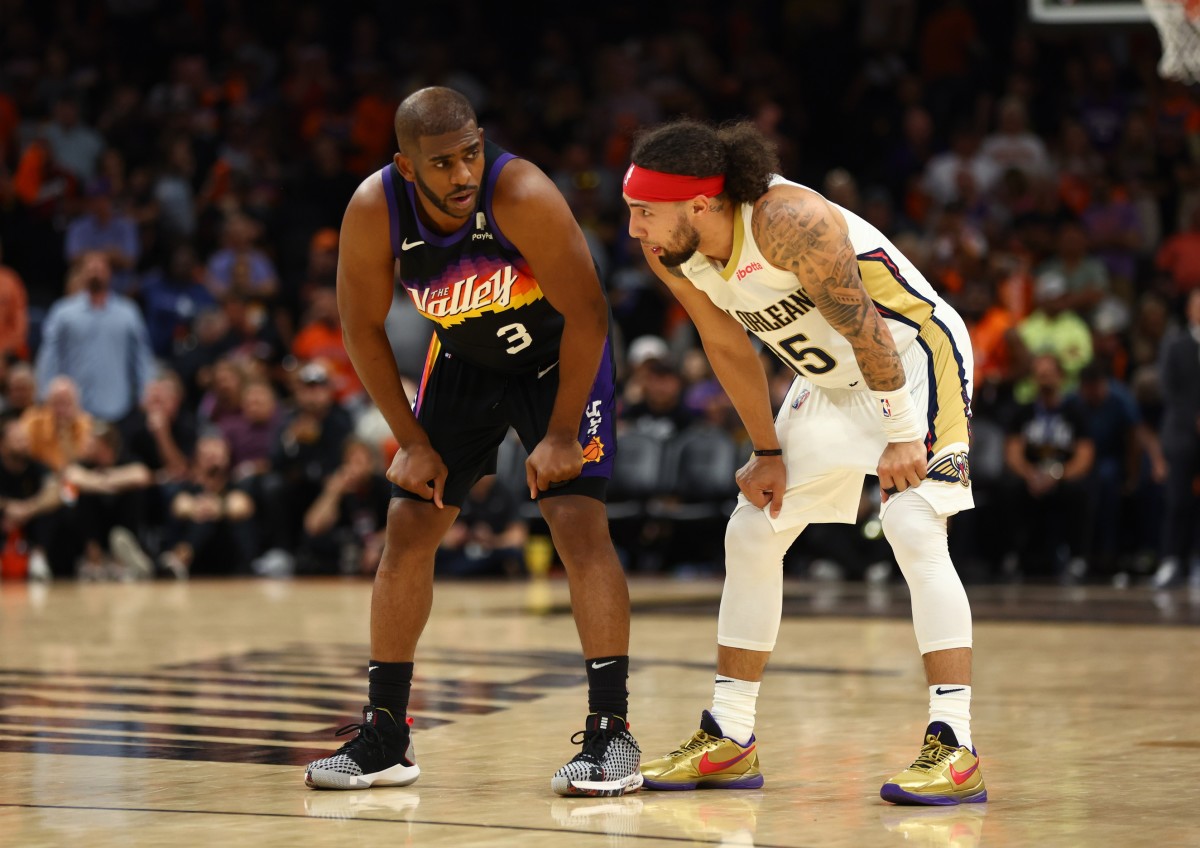
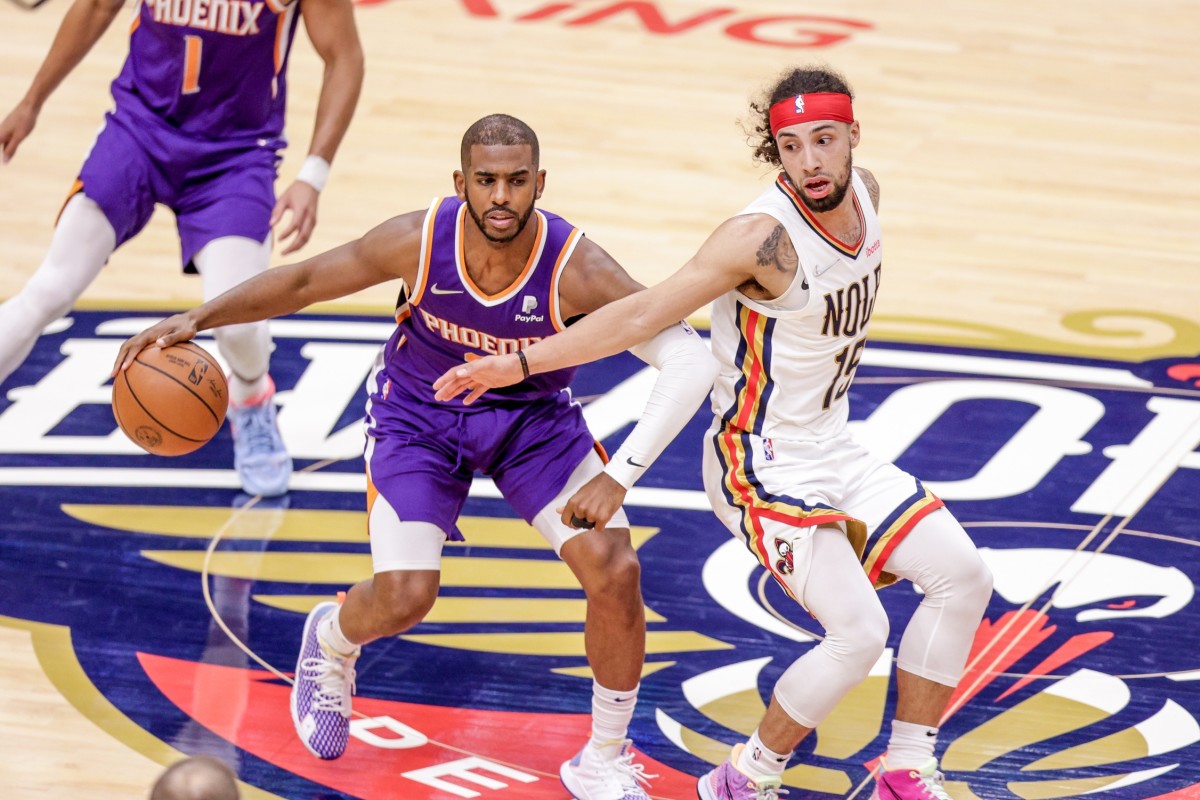
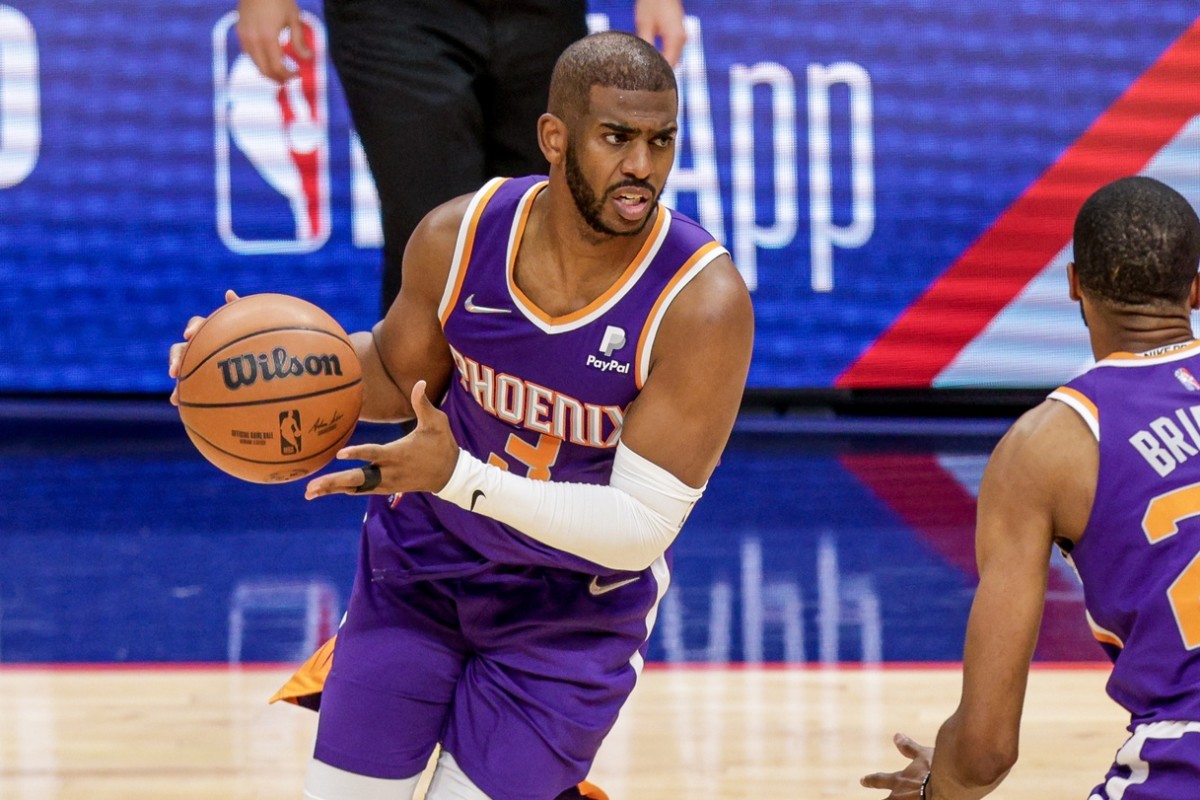
Before the Suns can do so, they need to get through the Dallas Mavericks, who are coming off a 4-2 series win over the Utah Jazz in the first round. With Luka Doncic in the lineup, Jalen Brunson firing on all cylinders and a swarming defense, the Mavericks appear be a formidable adversary.
Not that Paul is intimidated.
“He’s a competitor, he loves to win and he’s a leader,” Mavericks coach Jason Kidd said. “That’s it in a nutshell. But he loves the competition and he loves to win and he loves to put his team in a position to win.”
Paul is coming off an incredible closeout performance in Game 6 against the Pelicans. He finished with 33 points and eight assists while shooting a perfect 14-14 from the floor and and 4-4 on free throws. It was a historic outing given his efficiency.
In the series overall, Paul averaged of 22.3 points, 4.3 rebounds and 11.3 assists in six games. The Suns prevailed despite Devin Booker missing three games.
“I think he’s controlling everything on the court, so he’s their leader,” Doncic said of Paul. “He’s a helluva player and we really have to make a great effort to stop him.”
The damage Paul did to the Pels on pull-up jumpers was remarkable. He produced a staggering 1.203 points per possession on off-the-dribble jumpers within the half-court, accounting for 61.5 percent of his shot attempts. He often used ball screens to get to his spots in short-range and the Pelicans didn't have an answer.
“It’s hard to slow him down,” Doncic said. “Like you saw in the last game, he didn’t miss. That was pretty crazy. But I think contest every shot, be physical with him. It’s going to be hard to stop him.”
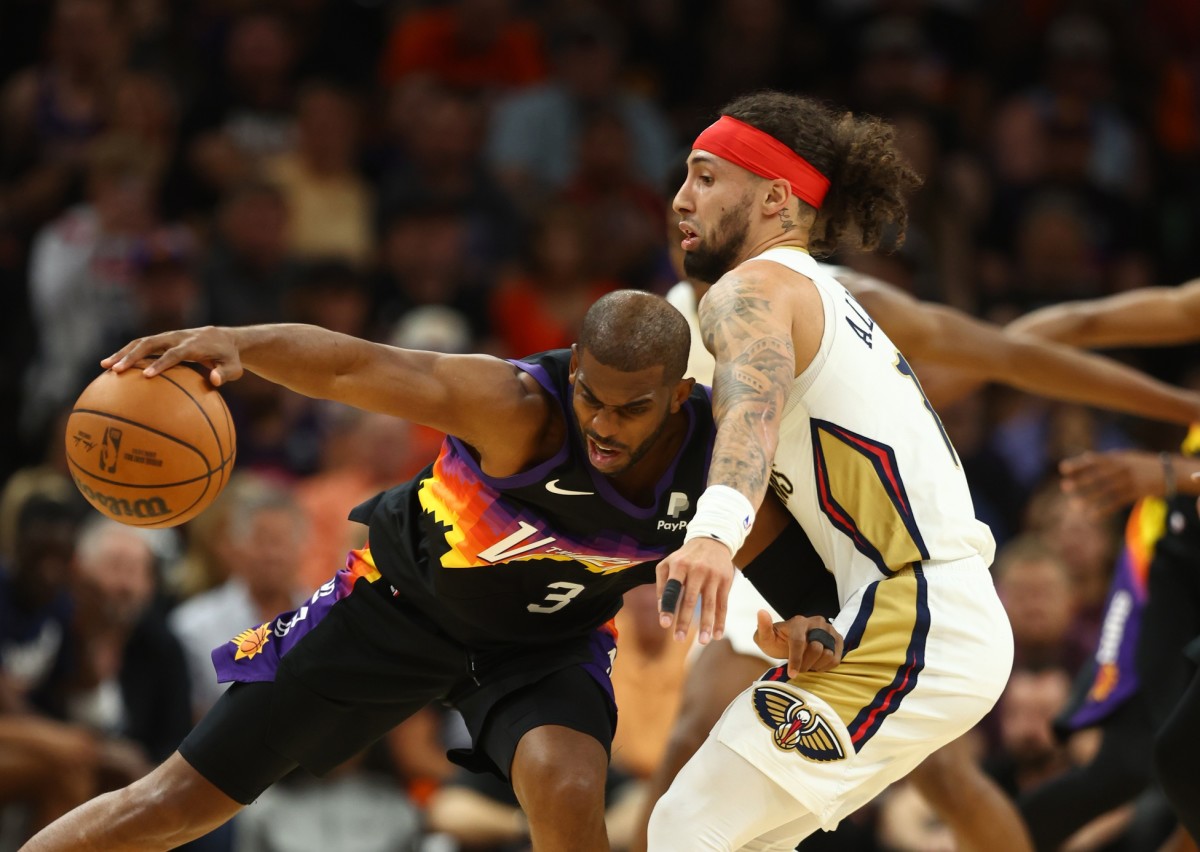
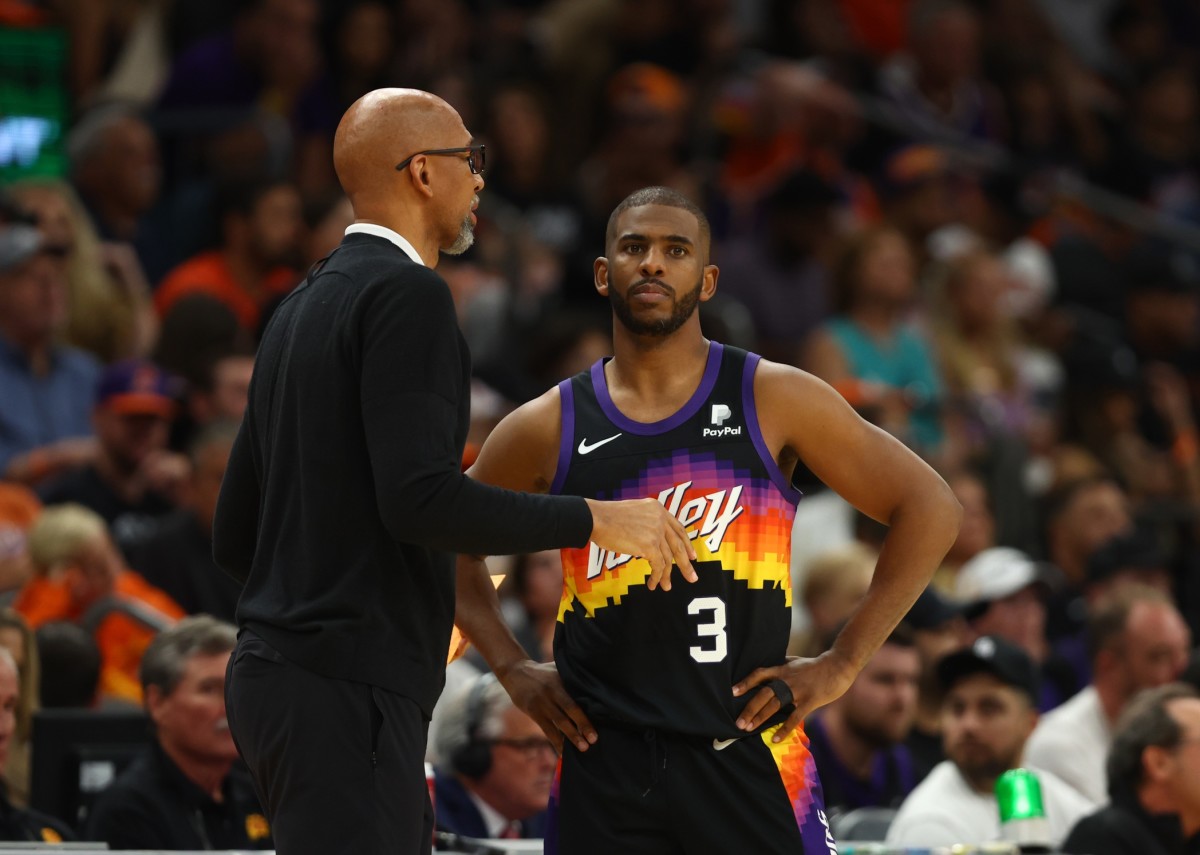
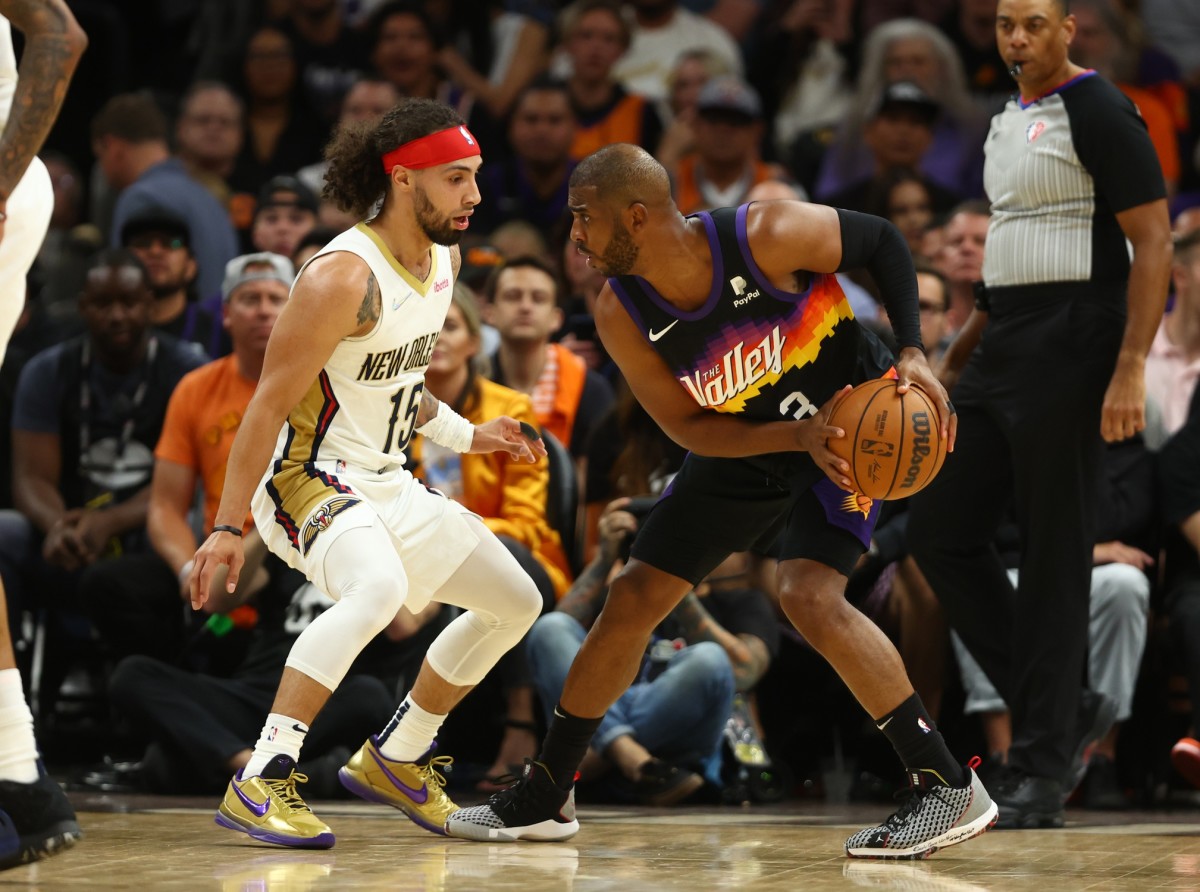
It takes a concerted effort from the defense to slow down Paul. The Pelicans attempted to engage him full-court often as their series progressed, but that just offered Paul simpler circumstances to use ball screens or re-screens to get to his spots.
“You don’t control him,” Kidd said. “You just try to make it tough. That’s all you can do. He’s been in the league, he’s seen all the different defenses. You just got to try to make it tough and you tip your hat when he makes a tough shot.”
The Pels were limited on defense by having Jonas Valanciunas (or whoever is playing the 5) on the floor. The base defense they played was to have the big drop and delay Paul enough for the on-ball defender to make contest on the trail. It's too challenging to make that recovery for most defenders, even Herb Jones.
When the Pelicans had a longer wing defender like Brandon Ingram attempting to engage aggressively, Paul worked to cut him off deep in the gap before dribbling through to the other side of the paint. He was able to get to his short-range spot and raise up for a jumper.
Attempting to deploy ice coverage against Paul in a middle floor ball-screening situation doesn't tend to work well either when the big man is playing coverage. He likes to drag out the defender before receiving a re-screen, knowing he's going to have space to get his pull-up 3 off.
With the Mavericks having a more agile big men in Dwight Powell and Maxi Kleber to play closer to the level on-ball screens and hold his own on switches, they are a better equipped to take away the typical gap Paul tends to face in pick-and-roll situations.
The Mavericks dealt with a significantly more potential pull-up shooting 3-point threat in Donovan Mitchell in the first-round. Deploying the big close and having a long on-ball defender aggressively go over neutralized that element of Mitchell's game. With Paul, doing more of the same could make things less comfortable.
The Suns commonly deployed multiple ball screeners in double-drag actions early in possessions to attack the Pelicans' weakest defender out in space — Jaxson Hayes. Paul's main goal remained the same; get to a short-range spot to get his shot off.
Going under against the double-drag screens left the Pelicans vulnerable to Ayton setting a ball screen at the nail to help Paul still get to where he wanted to go in short range. Unless a lot of switching was to occur, that defender is simply going to have to be ready to work.
With Paul knowing Valanciunas is going to be engaged in a drop, he sometimes used a re-screen from the second double-drag screener to get a simple look in short range. With a big man in Hayes attempting to navigate that, the Pelicans' personnel were simply too limited.
Earlier in the series, Paul was using side-ball screens at times to snake dribble into the gap for a short-range jumper. He was also coming straight off against the drop to get to a baseline jumper. Both techniques required using an outside screen direction and the Pelicans had issues either way.
When the Pelicans had Valanciunas show to prevent Paul from coming off to the outside using a side-ball screen, he instead worked deeper toward the corner to use a middle-direction ball screen for easy pull-ups. The adjustments Paul can make in-game is a testament to his high-level basketball intelligence and recognition of the opposition's limitations from a personnel and strategy standpoint.
The significant advantage the Mavericks held over the Jazz was knowing when they went small, they'd have clean looks from 3. That was similar to the edge Paul knew he had using ball screens for short-range jumpers against the Pelicans' drop coverage. New Orleans just lacks the personnel to adjust to make it more challenging.
If the Mavericks go small, they could look to switch to take away the advantage he gains from using ball screens. That's not an obvious answer when considering Paul is more than capable of breaking down a defender off a switch to create an advantage. However, it does make him work.
There has been a perception from some about Larry Nance Jr. that he's some sort of Swiss Army defender like Draymond Green. A big part of that comparison is thinking he can make a switch and contain top level players out on an island, which he was quite incapable of doing against Paul.
Another complication with guarding Paul is that with how often he uses ball screens, the on-ball defender can become vulnerable to him sending the screener away. If the defender's body positioning is angled to give up the driving lane or they are just engaging too tightly, Paul takes full advantage to attack downhill.
Teams tend to start hunting the weakest on-ball defender as a series progresses by using their man as a ball screen to draw the switch. Paul did this on a possession against C.J. McCollum to force him to have to guard him in isolation, resulting in easy shots.
Similar to how the Jazz were using a show-and-recover technique to deny the Mavericks the switch against Jordan Clarkson and Mike Conley, they could attempt to use a similar strategy if the series comes to that. However, it will require all defenders involved being ready to compete.
There's a lot of challenges that Paul presents to a defense as a scorer and he put that on display against the Pelicans. His facilitation produced staggering results as well. For example, Phoenix shot 23-30 (76.7 percent) overall on his passes to the roll man against New Orleans.
Paul's tendencies of getting into the gap to draw step ups from the big defender in ball-screen coverage commonly opens up finishes for Ayton. When the big defender sags off, Paul has a knack for setting up Ayton for pick-and-pop looks. When the defense tags the roll, he gets it to the open shooter. Whatever the defense does, he makes that read and capitalizes.
The Mavericks will need to be ready to scramble as a unit and be prepared to handle the opposing big despite being at a size disadvantage. Gobert is a better rebounder than Ayton, but Ayton is a far more skilled scoring threat that poses different challenges. Expect Paul to take advantage of each of them.
